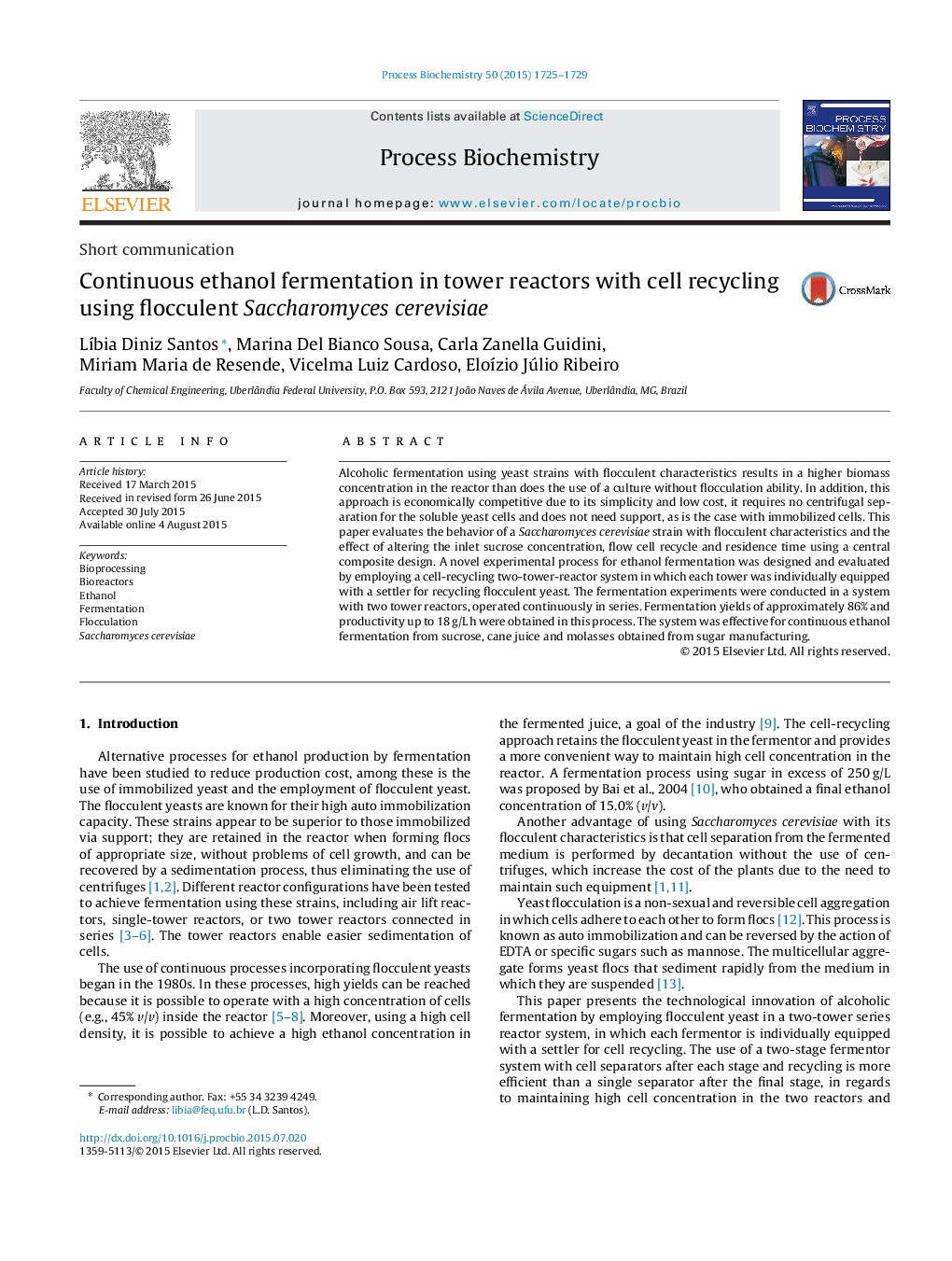| Article ID | Journal | Published Year | Pages | File Type |
|---|---|---|---|---|
| 34270 | Process Biochemistry | 2015 | 5 Pages |
•The alcoholic fermentation with flocculent yeast was optimized.•Alcoholic fermentation in tower reactor reached high yield and productivity.•These results were good when compared to the industrial processes in Brazil.
Alcoholic fermentation using yeast strains with flocculent characteristics results in a higher biomass concentration in the reactor than does the use of a culture without flocculation ability. In addition, this approach is economically competitive due to its simplicity and low cost, it requires no centrifugal separation for the soluble yeast cells and does not need support, as is the case with immobilized cells. This paper evaluates the behavior of a Saccharomyces cerevisiae strain with flocculent characteristics and the effect of altering the inlet sucrose concentration, flow cell recycle and residence time using a central composite design. A novel experimental process for ethanol fermentation was designed and evaluated by employing a cell-recycling two-tower-reactor system in which each tower was individually equipped with a settler for recycling flocculent yeast. The fermentation experiments were conducted in a system with two tower reactors, operated continuously in series. Fermentation yields of approximately 86% and productivity up to 18 g/L h were obtained in this process. The system was effective for continuous ethanol fermentation from sucrose, cane juice and molasses obtained from sugar manufacturing.
Graphical abstractFigure optionsDownload full-size imageDownload as PowerPoint slide
